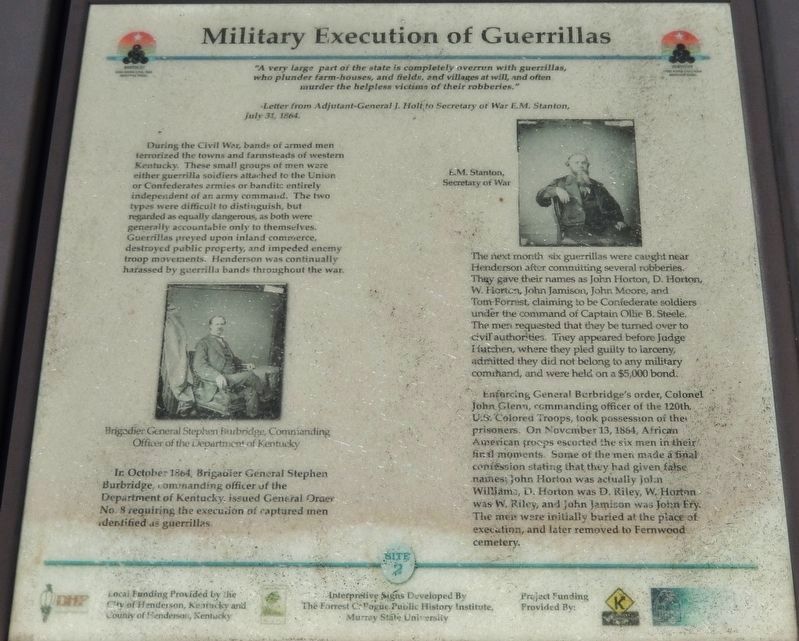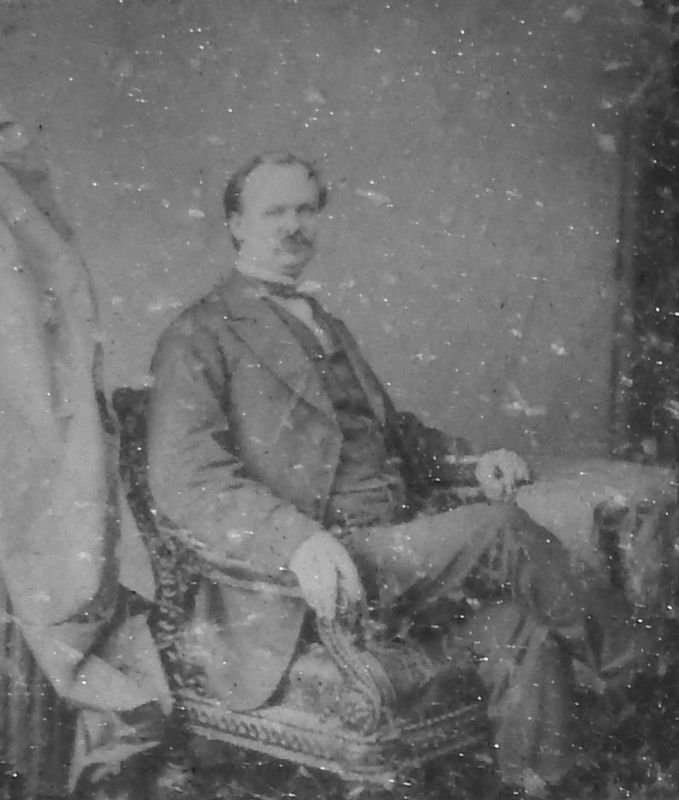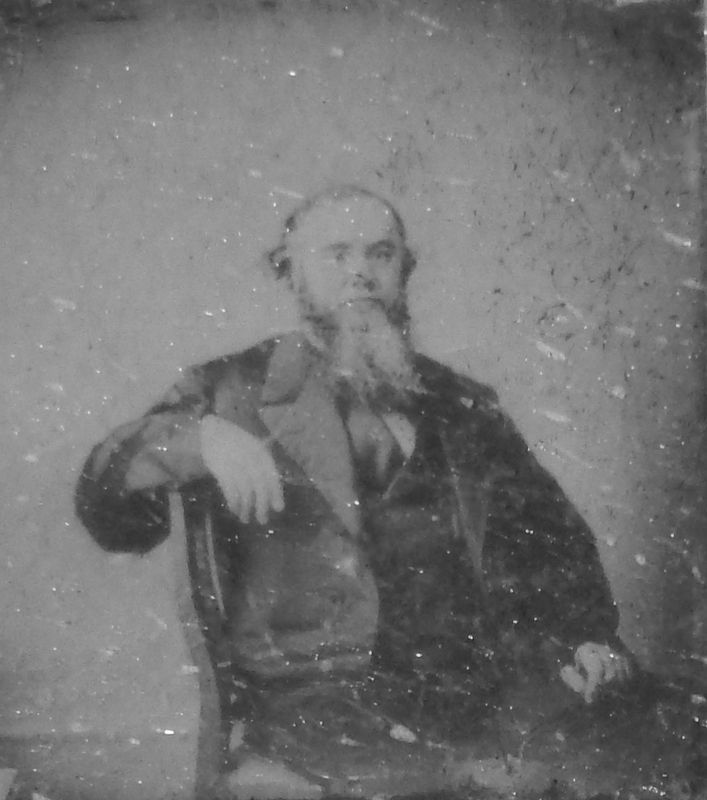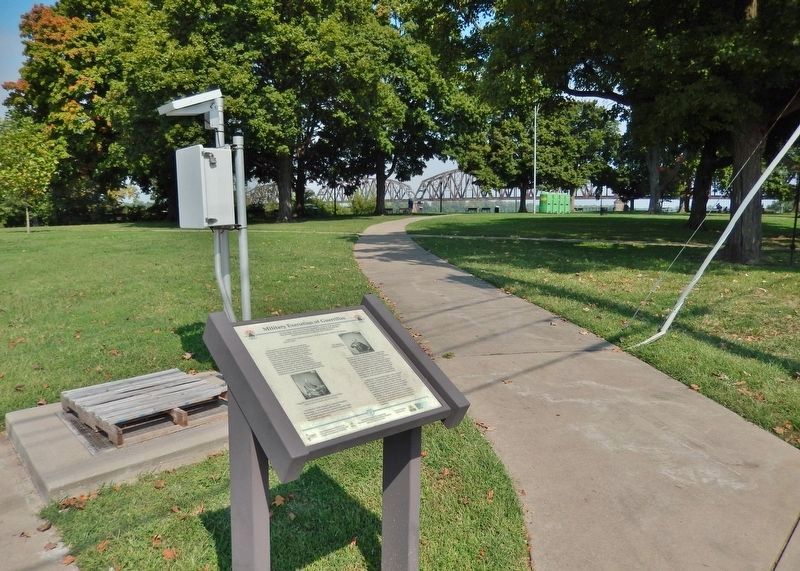Henderson in Henderson County, Kentucky — The American South (East South Central)
Military Execution of Guerrillas
"A very large part of the state is completely overrun with guerrillas, who plunder farm-house, and fields, and villages at will, and often murder the helpless victims of their robberies."
-Letter from Adjutant-General J. Holt to Secretary of War E.M. Stanton
July 31, 1864.
During the Civil War, bands or armed men terrorized the towns and farmsteads of western Kentucky. These small groups of men were either guerrilla soldiers attached to the Union or Confederates armies or bandits entirely independent of an army command. The two types were difficult to distinguish, but regarded as equally dangerous, as both were generally accountable only to themselves. Guerrillas preyed upon inland commerce, destroyed public property, and impeded enemy troop movements. Henderson was continually harassed by guerrilla bands throughout the war.
ln October 1864, Brigadier General Stephen Burbridge, commanding officer of the Department of Kentucky, issued General Order No. 8 requiring the execution of captured men identified as guerrillas.
The next month, six guerrillas were caught near Henderson after committing several robberies. They gave their names as John Horton, D. Horton, W. Horton, John Jamison, John Moore, and Tom Forrest, claiming to be Confederate soldiers under the command of Captain Ollie B. Steele. The men requested that they be turned over to civil authorities. They appeared before Judge Hutchen, where they pled guilty to larceny, admitted they did not belong to any military command, and were held on a $5,000 bond.
Enforcing General Burbridge's order, Colonel John Glenn, commanding officer of the 120th U.S. Colored Troops, took possession of the prisoners. On November 13, 1864, African American troops escorted the six men in their final moments. Some of the men made a final confession stating that they had given, false names; John Horton was actually John Williams, D. Horton was D. Riley, W. Horton was W. Riley, and John Jamison was John Fry. The men were initially buried at the place of execution, and later removed to Fernwood Cemetery.
Erected by City of Henderson, County of Henderson, Forrest C. Pogue Public History Institute, Murray State University, & Kentucky Transportation Cabinet. (Marker Number 2.)
Topics. This historical marker is listed in these topic lists: African Americans • War, US Civil. A significant historical date for this entry is November 13, 1864.
Location. 37° 50.412′ N, 87° 35.647′ W. Marker is in Henderson, Kentucky, in Henderson County. Marker is at the intersection of North Water Street and 1st Street, on the left when traveling
north on North Water Street. Marker is located in the southeast corner of Audubon Mill Park. Touch for map. Marker is at or near this postal address: 101 N Water St, Henderson KY 42420, United States of America. Touch for directions.
Other nearby markers. At least 8 other markers are within walking distance of this marker. Lewis and Clark in Kentucky / Henderson (within shouting distance of this marker); Henderson's Governors (within shouting distance of this marker); Father of the Blues (within shouting distance of this marker); John James Audubon in Henderson (within shouting distance of this marker); Audubon Saw and Grist Mill (about 300 feet away, measured in a direct line); General "Stovepipe" Johnson (about 300 feet away); Steamboats (about 300 feet away); Good Government League (about 400 feet away). Touch for a list and map of all markers in Henderson.
Also see . . .
1. Henderson County, Kentucky History: The Murder of James E. Rankin. Of all the horrors of the war, there was no one occurrence more terrible, more frightful, or more atrocious than the history of the one to follow. Thompson and Powell belonged to the command of Captain Dick Yates, a commissioned Confederate officer, who was recently killed in a skirmish near that town. Lieut. Headington had received orders to publicly execute these last two prisoners in our city in retaliation for the atrocious attempt of a gang of guerrilla scoundrels and marauders to murder in cold blood, Mr. Jas. E. Rankin, one of our most estimable citizens, and for other outrages perpetrated of late in Henderson and vicinity. These two men were selected by Gen. Burbridge to be shot at twelve o’clock... (Submitted on August 16, 2018, by Cosmos Mariner of Cape Canaveral, Florida.)
2. The Civil War in Kentucky: Chaos in the Winter of ’64. Kentucky descended further into chaos. Guerillas rampaged across the state, committing acts ranging from stealing food and horses to murders for the sake of war allegiances or simple revenge. To combat them, Maj. Gen. Stephen G. Burbridge, commander of the Military District of Kentucky, issued his General Order No. 59. It stated: “Whenever an unarmed Union citizen is murdered, four guerrillas will be selected from the prison and publicly shot to death at the most convenient place near the scene of the outrages.” The 33-year-old general—who was to wear the moniker “Butcher” Burbridge for rest of his life—largely confined his punishments to those who, in his opinion, had committed acts against the Union. But the rules began being loosely interpreted by him and his subordinates, and those shot had gone from being guerillas to Confederate prisoners of war to citizens suspected of rebel leanings. (Submitted on August 16, 2018, by Cosmos Mariner of Cape Canaveral, Florida.)
Credits. This page was last revised on February 13, 2023. It was originally submitted on August 14, 2018, by Cosmos Mariner of Cape Canaveral, Florida. This page has been viewed 311 times since then and 35 times this year. Photos: 1. submitted on August 15, 2018, by Cosmos Mariner of Cape Canaveral, Florida. 2, 3, 4. submitted on August 16, 2018, by Cosmos Mariner of Cape Canaveral, Florida. • Bernard Fisher was the editor who published this page.



